Intel Core i9-10850K Review: The Real Intel Flagship
by Dr. Ian Cutress on January 4, 2021 9:00 AM EST- Posted in
- CPUs
- Intel
- Core
- Z490
- 10th Gen Core
- Comet Lake
- LGA1200
- i9-10850K

When a company like Intel creates a CPU design, the process of manufacturing brings about variation on the quality of the product. Some cores will only reach a certain frequency, while others have surprisingly good voltage characteristics. Two goals of processor design are minimizing this variance, but also shifting the peak higher, all while controlling how much of the silicon is actually useable. This is part of the magic of ‘binning’, the process of filtering the silicon into different ‘bins’ for applicability to a given product. It is through this process that the Core i9-10850K exists, albeit reluctantly.
Intel’s Core i9-10850K: Doing The Heavy Lifting
The Core i9-10850K is the entry member to Intel’s Core i9 lineup, with 10 unlocked cores and hyperthreading, and can turbo up to 5.2 GHz under Thermal Velocity Boost. The added bonus is that it's more widely available in the market than the Core i9-10900K.
| Intel 10th Gen Comet Lake Core i9 and Core i7 |
||||||||||
| AnandTech | Cores | Base Freq |
TB2 2C |
TB2 nT |
TB3 2C |
TVB 2C |
TVB nT |
TDP (W) |
IGP | MSRP 1ku |
| Core i9 | ||||||||||
| i9-10900K | 10C/20T | 3.7 | 5.1 | 4.8 | 5.2 | 5.3 | 4.9 | 125 | 630 | $488 |
| i9-10900KF | 10C/20T | 3.7 | 5.1 | 4.8 | 5.2 | 5.3 | 4.9 | 125 | - | $472 |
| i9-10900 | 10C/20T | 2.8 | 5.0 | 4.5 | 5.1 | 5.2 | 4.6 | 65 | 630 | $439 |
| i9-10900F | 10C/20T | 2.8 | 5.0 | 4.5 | 5.1 | 5.2 | 4.6 | 65 | - | $422 |
| i9-10900T | 10C/20T | 1.9 | 4.5 | 3.7 | 4.6 | - | - | 35 | 630 | $439 |
| i9-10850K | 10C/20T | 3.6 | 5.0 | 4.7 | 5.1 | 5.2 | 4.8 | 125 | 630 | $453 |
| Core i7 | ||||||||||
| i7-10700K | 8C/16T | 3.8 | 5.0 | 4.7 | 5.1 | - | - | 125 | 630 | $374 |
| i7-10700KF | 8C/16T | 3.8 | 5.0 | 4.7 | 5.1 | - | - | 125 | - | $349 |
| i7-10700 | 8C/16T | 2.9 | 4.7 | 4.6 | 4.8 | - | - | 65 | 630 | $323 |
| i7-10700F | 8C/16T | 2.9 | 4.7 | 4.6 | 4.8 | - | - | 65 | - | $298 |
| i7-10700T | 8C/16T | 2.0 | 4.4 | 3.7 | 4.5 | - | - | 35 | 630 | $325 |
As with the other 10th Gen Intel Core i9 processors, this one supports two channels of DDR4-2933, uses the LGA1200 socket on Intel 400-series motherboards, and has sixteen lanes of PCIe 3.0 for add-in hardware. Intel likes to point out it has another 24 PCIe 3.0 lanes through the chipset, however this is limited by the DMI/PCIe 3.0 x4 uplink to the processor.
With the Core i9-10850K, users are essentially getting the Core i9-10900K top tier model, but at 100 MHz lower across the board. The peak turbo is 5.2 GHz rather than 5.3 GHz, the base frequency is 3.6 GHz rather than 3.7 GHz, and both processors are set at a 125 W TDP. Saving 100 MHz also saves $35 from the bulk pricing of the processor, but because of the lack of availability in the 10900K, we’ve seen the difference between the two vary from $50 to $200 in recent months. This all feeds into the main story of what is going on here.
Despite being part of Intel 10th Generation Core family, the Core i9-10850K was released after the launch of the more public and vocal members, such as the 10900K or 10700K. The email about the 10850K dropped in our inbox on July 27th, two months after the official launch of the rest of the family, and while Intel didn’t have samples ready for that launch today (to be honest, it took us by surprise), requests were lodged and our arrived a few weeks later.
While not completely surreptitious, Intel pushed this processor onto the market without so much fanfare.
The Secret Art of Binning
Binning is a fancy word for quality management and filtering – when the silicon is manufactured, some of it is better quality than others, and by testing the quality each product can be filtered into where it is best suited, filtered into ‘bins’. The nature of binning is not new in the industry by any stretch of the imagination, as depending on the manufacturing process quality can vary wildly, and binning enables a semiconductor company to make the most out of the fixed price wafer costs. If a given wafer provides 50 processors, only 10 meet the ideal quality level but another 35 meet a lower quality level, then the yield is 45 out of 50, rather than just 10, enabling less waste and arguably better value for the end customer. Normally when a company talks about yield, they are talking about this 45 out of 50 number.
The main element to how this binning manifests is in two forms of variability: the variability in the process and the variability in the design. Manufacturing is vastly complex, however the methods and order of tasks in the lithography process, as well as the speed of production, can affect this variability (it comes down to a lot of R&D). Design variability is somewhat different, as it requires engineers to build mechanisms into a processor design to minimize quality variability, and this might come at the expense of power or die area.
For a unique company like Intel, technically they can manipulate both of these sources of variability, but for others who rely on foundry manufacturing, it’s a one sided affair and the companies that pay the most to TSMC (like Apple) get key details on the other side of the equation.
The end goal is to minimize variability (make each processor off the line reach the same target), but also to move that variability peak nearer a more desirable goal, such as performance, or power. The whole process is a conveyor belt of 10000 levers and switches, where each one can affect the performance of a dozen others, and so finding the best configuration in a sea of options can be very difficult.
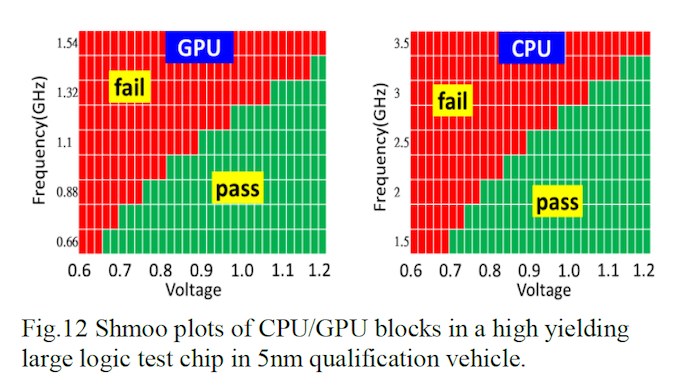
Example shmoo plots of Samsung's 5nm Test SoC, showing simple pass/fail at voltage and frequency
Simple pass/fail metrics are often graphed in a shmoo plot, like the one above. Beyond a pass/fail metric, companies like Intel have to also determine what percentage of the processors on a given wafer or batch meet those requirements. Because a graph of variability in the quality of silicon can be so varied, where the processor company defines its product binning targets is very important. A company like Intel needs to decide how many processors of each type it will need, what its customers will need, how that will change over time, and what it can do to maximize sales $ per square millimeter of silicon. In a situation where customers might want a cheaper product, Intel could take higher quality silicon and label it as a lower quality product, so it doesn’t sit on a lot of unsold processors. But contrary, if customers are demanding a higher quality product that manufacturing can’t deliver, then it can become an issue. It also matters when it comes to marketing as well.
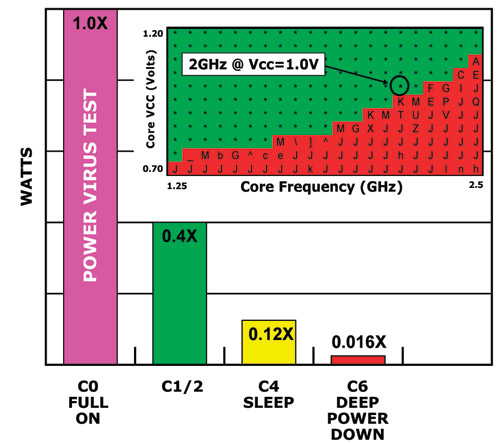
A shmoo plot of Intel's Centrino CPU, with the letters potentially indicating
what % of processors pass/fail at those points.
A semiconductor company like Intel can do themselves a favor by choosing binning targets and metrics that are not as aggressive. But it’s really the high-end halo products that matter when it comes to promoting the best of the best. Intel has a history of very aggressive binning, to the point where its quality requirements for the top product are so strict that only a handful of processors will ever meet that level for every million produced.
Over the past two decades Intel has made super not-so-secret ‘Everest’ or ‘BlackOps’ processor models. These are technically off-roadmap processors not for general sale, because of the very strict quality requirements. These units are selected because of the super-high frequency possible, usually at a completely disregard for power or cooling requirements. One of the first good examples of this was the special-order-only dual core Xeon X5698 rated for 4.4 GHz in Q1 2011, based on Intel’s 32nm Westmere platform, and was built solely for high-frequency stock market traders who needed the lowest latency whatever the cost. The concept of a microsecond for these traders can be millions of dollars, so throwing $20k+ each for the fastest processor available is chump change (that includes OEM markup). These were 1000 MHz faster than any of Intel’s regularly binned processors for the open market.
Sandy Bridge also had an Everest model, whereas for Ivy Bridge it was known as BlackOps, offering 6 cores at 4.6 GHz all-core and a massive 250 W TDP. These were again destined for Wall Street, but came with no product identifier, and as far as we can tell, no warranty except for dead-on-arrival (DOA). These were such at the edge of Intel’s manufacturing capabilities that if you wanted one, you had to accept that it might not work beyond a couple of months. Again, for these traders, we’re talking fractions of a percent of cost, so that was almost of zero concern.
The only reason we know about these is because over time some have filtered into the hands of enthusiasts and collectors. More recently, Intel’s latest high-frequency trading processor was a bit of a doozy. We overheard (and confirmed) at an event that Intel was planning to launch an auction-only OEM-only high-performance processor where it couldn’t guarantee stock nor would it offer any warranty.
This was a 14-core Core i9-9990XE processor, with all cores running at 5.0 GHz all the time, built for Intel’s high-end desktop platform (quad channel memory, 48 PCIe lanes). We actually got one into review through our industry contacts, in a special single socket server unit and custom cooling. The unit had a peak power loading somewhere north of 600 W. It went well above Intel’s 28-core high-end Xeon products. Single threaded performance was crazy.
Unfortunately the Core i9-9990XE didn’t do so well commercially. The idea was that the OEMs that ended up ‘winning’ these CPUs at Intel’s auctions would build systems for high-frequency traders and sell them on that way. Most of the companies that ‘won’ the processors at Intel’s auctions ended up selling them as CPU-only models instead, after it couldn’t get sufficient interest. Intel has since stopped making these CPUs available, except for the one company that is still selling to HFT.
Since then, Intel has launched its consumer grade 8-core Core i9-9900KS, which also had all eight cores at 5.0 GHz, albeit with only dual channel memory and 16 PCIe lanes. This was still a very limited edition product, and was only on sale for four months before being discontinued. Intel also gave away 400 special binned versions of its 10900K as part of an influencer giveaway, centered around its new thermoelectric/liquid all-in-one cooler designed to bring temperatures below ambient during idle operation. These are not a special numbered version you can buy, however.
When Intel (or anyone else) designs a processor, there are a number of tools at the company’s disposal in order to help the efficacy and variability of the manufacturing to help guide its products into given quality bins. Should Intel focus on making a very specific HFT processor, then there are 1000 design decisions that would be made which would make no sense for a consumer product, and so you can see the complexity of trying to extract the best performance out of the silicon if the bulk of the sales for that design are going to be for a more mainstream product. For an example of a processor built for extreme tasks, then I point towards IBM’s z-series hardware, which starts at 12 cores running 5.2 GHz, and four processors in a server share a 960 MB L4 cache chip. It’s a crazy (but fun) rabbit hole of processor design to go down.
Binning: Core i9-10850K
So why spend so much talking about special 1-in-a-million processors? The point is that when Intel decides where to draw the line on silicon quality, where it draws the line for its commercial flagship is very important. It needs to draw the line at a place where it has a competitive product, but can also produce enough to satisfy the needs of the market. There’s no point drawing that line for consumer flagship at the 1-in-a-million level if you can only sell 10 a month. If reviewers lead with that 1-in-a-million review on launch day but no-one can buy it, ever, then as a brand you’ve misdirected your customer base. At least with a BlackOps processor most users understand they will never see one, but for the top Core i9 product, it has to be widely available - it needs to be somewhere in that 10000-in-a-million level at least (one might imagine).
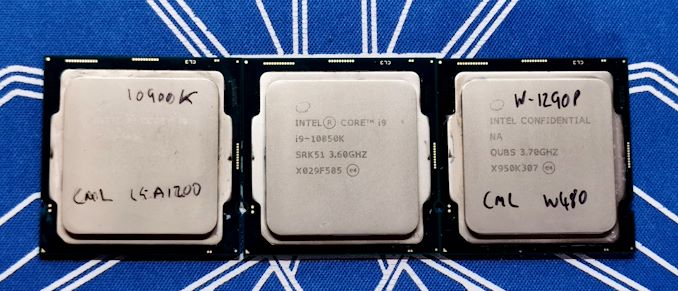
Intel's 10-core Flagship Comet Lake Family: 10900K, 10850K, W-1290P
Which brings me to the sole reason why the Core i9-10850K exists and why it was launched two months after the main product line, after the Core i9-10900K. Simply put, Intel drew that quality line for its top bin processor too aggressive to the point where the company could not meet the demand. We’ve never had a x50K processor in previous generations because that drawn line was so aggressive, we’ve only ever had the line drawn further away (such as Devil’s Canyon on Haswell). This is very much the first instance in recent memory I’ve seen a vendor have to introduce a processor with more lax requirements because it couldn’t build enough of the top-end chip.
In the first six months since the launch of the Core i9-10900K, stock has been scarce is popular markets, and non-existent in secondary markets, with a very slow trickle through. That level has somewhat normalized now, but users who could not purchase the 10900K had two options: (1) wait until they could get one, or (2) buy something else, perhaps from a competitor.
In order to bridge that gap, the Core i9-10850K came out onto the market, where the binning line was ever so slightly more lax compared to the 10900K, and more silicon could achieve the targets. We’ve seen in the SKU list that it appears to be a 100 MHz drop across the board, but as we’ll see in this review, the voltage also seems to be higher, so it’s burning more power to get a lower frequency.
The Core i9-10850K has been widely available since launch. In our monthly CPU Guides, I’ve seen sufficient quantities of 10850K units with prices hovering around the Intel expected pricing (sometimes cheaper with OEM-only non-packaged 1-year seller-only versions), especially at a time where stock of the 10900K is so limited that sellers were charging +$200 premiums for the stock they did have. At that price, users were looking at 16-core AMD models, especially for a high-performance market where multi-core performance is still a key metric.
If Intel had drawn the line at the 10850K level in the first instance, the concept of binning wouldn’t be a discussion at this time, and there would have been sufficient stock on the shelves since launch. The question at the time was all about the message that Intel wanted to project with its top-tier 10-core overclockable model, and the 5.3 GHz mark provided that message, even if quantity of available processors was limited. There’s no point having a BlackOps style processor as the flagship if no-one can buy it. This is why the title of this review is that the Core i9-10850K is the true flagship – it’s the one that has been actively available to purchase.
This Review
Intel provided a Core i9-10850K retail processor for review, and as a result we’ve put it through our benchmark suite. Over the next few pages we will cover CPU performance, gaming performance, and some of our microbenchmarks for power and frequency ramping response. The Core i9-10850K was launched before the Ryzen 5000 processors, however as both are available today, both sets of numbers are included.
Test Setup
As per our processor testing policy, we take a premium category motherboard suitable for the socket, and equip the system with a suitable amount of memory running at the manufacturer's maximum supported frequency. This is also typically run at JEDEC subtimings where possible. It is noted that some users are not keen on this policy, stating that sometimes the maximum supported frequency is quite low, or faster memory is available at a similar price, or that the JEDEC speeds can be prohibitive for performance. While these comments make sense, ultimately very few users apply memory profiles (either XMP or other) as they require interaction with the BIOS, and most users will fall back on JEDEC supported speeds - this includes home users as well as industry who might want to shave off a cent or two from the cost or stay within the margins set by the manufacturer.
| Test Setup | |||||
| Intel LGA1200 | Core i9-10900K Core i9-10850K Core i7-10700K |
ASRock Z490 PG Velocita |
BIOS P1.50 |
TRUE Copper |
Corsair DomRGB 4x8 GB DDR4-2933 |
| AMD AM4 | Ryzen 9 5900X Ryzen 7 5800X Ryzen 5 5600X |
MSI MEG X570 Godlike |
1.B3 T13 |
Noctua NHU-12S SE-AM4 |
ADATA 2x32 GB DDR4-3200 |
| GPU | Sapphire RX 460 2GB (CPU Tests) NVIDIA RTX 2080 Ti FE (Gaming Tests) |
||||
| PSU | Corsair AX860i Corsair AX1200i Silverstone SST-ST1000-P |
||||
| SSD | Crucial MX500 2TB | ||||
| Additional Cooling provided by SST-FHP141-VF 173 CFM fans | |||||
Many thanks to...
We must thank the following companies for kindly providing hardware for our multiple test beds. Some of this hardware is not in this test bed specifically, but is used in other testing.
| Hardware Providers for CPU and Motherboard Reviews | |||
| Sapphire RX 460 Nitro |
NVIDIA RTX 2080 Ti |
Crucial SSDs | Corsair PSUs |
 |
 |
 |
|
| G.Skill DDR4 | ADATA DDR4 | Silverstone Coolers |
Noctua Coolers |
 |
 |
 |
|
A big thanks to ADATA for the AD4U3200716G22-SGN modules for this review. They're currently the backbone of our AMD testing.
Users interested in the details of our current CPU benchmark suite can refer to our #CPUOverload article which covers the topics of benchmark automation as well as what our suite runs and why. We also benchmark much more data than is shown in a typical review, all of which you can see in our benchmark database. We call it ‘Bench’, and there’s also a link on the top of the website in case you need it for processor comparison in the future.


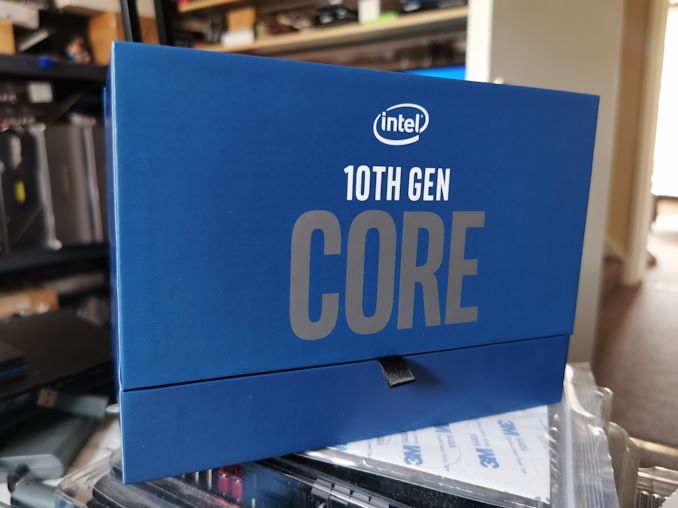
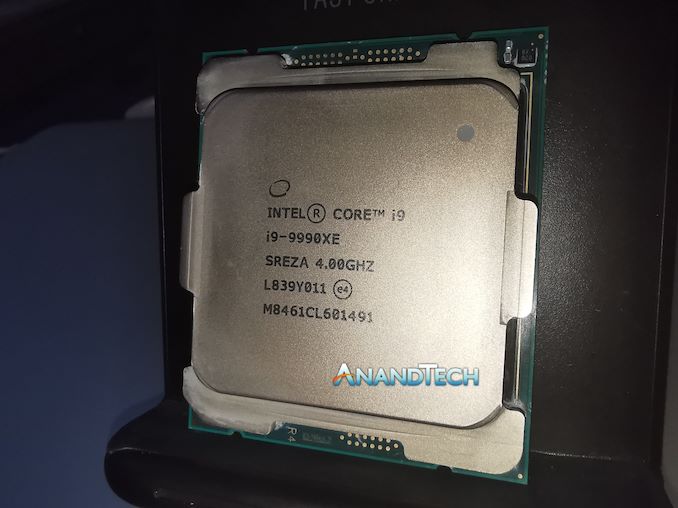
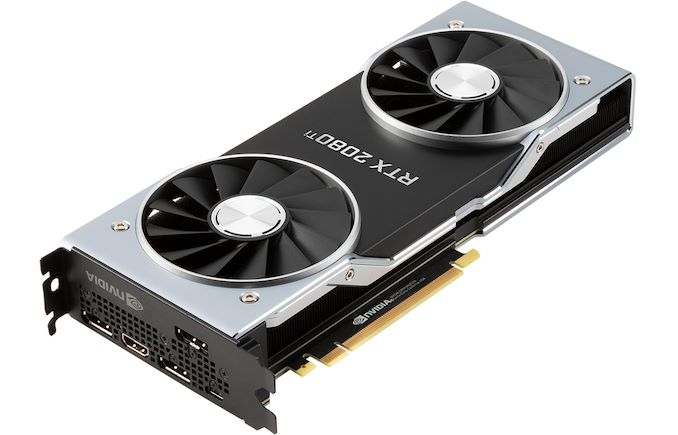
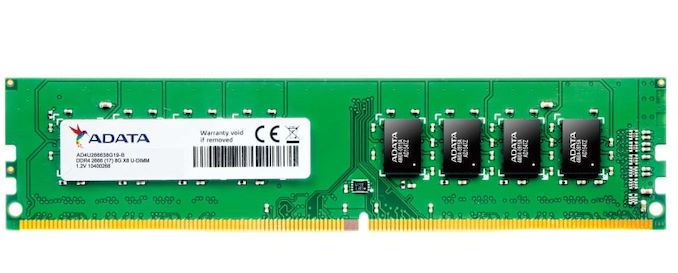








126 Comments
View All Comments
dwillmore - Wednesday, January 6, 2021 - link
FWIW, your y-cruncher link goes to a file on your C drive: file:///C:/Users/admin/AppData/Roaming/Microsoft/Word/www.numberworld.org/y-cruncherShowtime - Friday, January 8, 2021 - link
What cooler was used for this review?hellocopter - Wednesday, January 13, 2021 - link
Who in their right mind would buy anything Intel over AMD? Things are getting rather embarrassing for Intel..sonicmerlin - Sunday, January 17, 2021 - link
I bought a I5-2500k for $200 back in the day when it was top of the line... when did CPUs become so expensive...?FluxApex - Monday, March 8, 2021 - link
I have an i9-10850k and have yet to see my temps go above 79c stock clock, 85c overclocked to 5.0ghz all cores. This is with a cheap $80 deepcool captain aio. My Cryorig R1 maintains lower temps than this but has more noise due to being a heat pipe air cooler.Thorough review, but I have a problem with the CPU cooler they are using. Thermalright's website even says it is meant for an i7 CPU. The Thermalright True Copper is not meant for this TDP. Also, the cooler has been documented on several occasions to have improper machining on the base.
They need to use a proper cooler, just do a quick youtube search of all the overclocking videos for the i9-10850k and none will have temps near this.
Quartz11 - Tuesday, March 23, 2021 - link
Is that 5nm “speed shift” difference, down from the 16nm of 10900K, relevant/noticeable for intensive home office type use? That graph seems to be excluded from any further discussion, and in fact 10900K is still recommended over 10850K if price is similar enough in the conclusion.In my case, the price difference is very small, and I was going to get the 10900K variant. But that Frequency Ramp graph is causing some doubts.